Venue
Nehru Centre
Pandit Jawahar Lal Nehru was not only India’s first Prime Minister, but he was a visionary who foresee that only under the lap of science India’s future is secure. Nehru Centre was conceived in 1972, not as a mute memorial, but as living testament and monument of faith in Jawaharlal Nehru’s vision of man, his compassion for humanity, his concern for human beings and his undying passion to lift them to the greatest and highest purpose. The planetarium was only the first phase of an ambitious memorial that truly reflects the awe-inspiring spirit of a man who meant so much to three generations of Indians and which continues to inspire the present generation.
Departments at Nehru Centre
Nehru Planetarium
A centre for scientific study of astronomy and for a meeting of scientists and scholars for discussions and lectures. The Nehru Planetarium, commissioned on 3rd March 1977, with the objective of fostering scientific temper through the means of edutainment (that’s right! education + entertainment). The planetarium has been making learning Astronomy a pleasant experience. It also has grown into a Center for the scientific study of astronomy and for a meeting of scientists and scholars for discussions and lectures, arranged periodically on various stellar and Astronomical events.
The programmes are aimed at inspiring students. These include Science quiz contests, Astro-painting, Science elocution, Astro-poetry and Astro-quiz competitions. Special arrangements are made to watch, study and photograph Solar & Lunar eclipses, and many such other events. Telescopes are installed outside the Planetarium to enable eager visitors to watch these phenomena.
Discovery of India
Discovery of India Exposition, a permanent unique exposition, covering every aspect of artistic, intellectual and philosophical attainment of India through ages, is depicted in 14 galleries which seek to determine, the true identity of the country.
Images reach out from three-dimensional replicas of major architectural and artistic works, photographs, dioramas and audio-visuals. There are over 50,000 exhibits, spread over an area of 100,000 sq. feet and divided into separate sections, historically as well as architecturally.
Link for
Culture Wing
With a view to encouraging young performing artists, the Culture Wing organizes regular cultural programmes in all branches of performing arts, like dance, drama, music, etc.
Art Gallery
The Nehru Centre Art Gallery is dedicated to the promotion of young talent and provides a platform for them to exhibit their work along with that of eminent artists. The Nehru Centre Art Gallery was set up on November 14, 1992. It is dedicated to the promotion of young talent and provides a platform for them to exhibit their work along with that of eminent artists. The Gallery has featured a wide range of well-known painters and sculptors to students of art colleges. There have been several noteworthy exhibitions of paintings, sculptures, graphics, calligraphy, ceramics, textile-paintings and photography during the year.
The Gallery was inaugurated by Dr. H.N. Sethna, the then General Secretary of Nehru Centre, with an exhibition of eminent painters and sculptors – M. F. Husain, K. K. Hebbar, Prabhakar Barwe, Akbar Padamsee, Altar, Navjot and Kishor Thakur. After an extremely successful initial five years, the Art Gallery expanded its size and activities.
Auditorium and Exhibition Halls
Nehru Centre has a huge auditorium which consists of a multi-curtain stage, 03 green rooms, 917 seating capacity hall and the foyer.
Exhibition Halls
Nehru Center has exhibition halls for the exhibitors, two large exhibition halls on the ground floor and three halls on the second floor of the Discovery of India building. Several national and the international exhibitions are held here.The exhibition halls are well lit and air-conditioned.
Hall of Knowledge & Vision
(Ground & Second Floor)
Hall of Knowledge has 2 Units (Unit 1 and Unit 2) while the Hall of Vision has three units (Unit A, B and C)
Hall of Culture
(Air Conditioned – Ground Floor)
The Hall of Culture is available for holding conferences, seminars, lecture demonstration, inaugural functions.
Area of the hall is 2000 sq. ft. (186.00 sq. mt.) with a seating capacity of 210 chairs, centrally air conditioned with 2’9’’ high stage, general lighting, carpeted flooring (210 chairs are provided in the hall).
Hall of Harmony
(Air Conditioned – Ground Floor)
The Hall of Harmony is available for holding conferences, seminars, lecture demonstration, inaugural functions.
Area of the hall is 1500 sq. ft. (139.00 sq. mt.) with seating capacity of 150 chairs, centrally air conditioned with 18’’ high stage, general lighting, carpeted flooring (150 chairs are provided in the hall).
Who Are We Hall
Hall Details: Area of the hall is 1200 sq. ft. (111.50 sq. mt.) with seating capacity of 120 chairs, centrally air conditioned with 6’’ high stage, general lighting, carpeted flooring (120 chairs are provided in the hall).
How to Reach
By Air
Chhatrapati Shivaji Maharaj International Airport (CSMIA) of Mumbai, also known as Mumbai International Airport, is well connected to almost all the major cities of world directly or indirectly via Delhi, Kolkata, and Chennai International Airports of India. There are several taxi counters at the exit lounge of the airport where Air-Conditioned taxi services like OLA, UBER, EasyCab, Meru Fleet Cabs or prepaid taxi (AC and Non-AC) can be booked for Nehru Centre. The distance from CSMIA to Nehru Centre (AOCRP6 Venue) is around 20 km. Taxi charges usually vary from INR. 500 to INR 800 (USD 7 to 11) including Toll charges.
Air tickets for domestic & international travel can be booked by respective flight website of any travel planning websites. Some of the sites are mentioned below, however, AOCRP6 committee does not endorse them in anyway.
- 1. www.airindia.in/
- 2. www.irctc.co.in
- 3. www.booking.com
- 4. www.yatra.com
- 5. www.MakeMyTrip.com
- 6. www.expedia.com
By Train
Train is one of the most common modes of travel for passengers travelling long distances in India. India has a whopping 126,366 km of railway tracks, with 67,956 km of route length, covering all the states of India through 7000 railway stations. Train services can be classified into local, intercity and long distance. Long distance trains which usually traverse 500 km to around 4000 km have 5 classes (1st AC, 2nd AC, 3rd AC, 2-tier Sleeper and Second Sitting or General Coaches) of travel which are classified based on fare and services provided. 1st AC, 2nd AC and 3rd AC classes consist of air-conditioned sleeper coaches with 2 and 3-tier cushioned berths. Intercity trains which connect two nearby cities have Chair Car and Executive class which seating classes and have air-conditioned coaches with cushioned & reclining chairs. Sleeper classes are non-airconditioned sleeper coaches with cushioned berths. Local trains (non-AC) and Metro Trains (AC) run inside extended city boundaries and used to for local commutation purpose.
Chhatrapati Shivaji Maharaj Terminus (CSMT), Mumbai Central (BCT), Dadar, Lokmanya Tilak Terminus (LTT), Vasai, Panvel and Thane Railway Stations of Mumbai city are connected to almost all the major railway stations of India.
Railway tickets are exclusively available through Indian Railways Catering and Tourism Corporation (IRCTC) web portal www.irctc.co.in and can also be purchased through authorized IRCTC agents (https://www.irctc.co.in/eticketing/findAgents.jsf) by providing nominal convenience fees.
- 1. Howrah Junction Railway Station, Kolkata
- 2. New Delhi Railway Station, New Delhi
- 3. Chennai Central Railway Station, Chennai
- 4. Kanpur Central Station, Kanpur
- 5. Prayagraj Junction, Prayagraj
- 6. Patna Junction, Patna
- 7. Ahmedabad Junction, Ahmedabad
- 8. Vijayawada Junction
- 9. Bangalore City Railway Station
- 10. Charbagh Railway Station, Lucknow
- 11. Varanasi Junction, Varanasi
- 12. Deendayal Upadhyay Junction, Mughalsarai
- 13. Hyderabad Railway Station, Hyderabad
- 14. Kozikode Railway Station
Railway tickets are exclusively available through Indian Railways Catering and Tourism Corporation (IRCTC) web portal:
www.irctc.co.inMumbai Local Rail Network
Mumbai sub-urban Rail Network is a train service for local travels in and around Mumbai and it is vernacularly called and “Mumbai Locals”, which is considered life-line of Mumbai. Mumbai locals run almost 100% on time and tickets can be booked at ticket counters located on the local stations. It has 3 classes, namely 1st , 2nd and AC classes.
A train is divided into various compartments for the ease of its travellers. There are 4 female travellers compartments (including the First class). This is for the comfort and safety of female passengers travelling, especially during peak hours. While some are 24 hours Females only, the others allow Males after 11 pm till 5 am.
There is also a handicapped compartment for people with disabilities and is indicated with a sign and a beep sound on the platform. People diagnosed with cancer and women in advanced stages of pregnancy are also allowed to travel in this compartment. Anyone else found travelling can be fined.
The general compartments include 3 general first class and the rest are second class compartments. Anyone can travel in it. It is not a men’s compartment. But it is better for women to avoid using it when it is extremely crowded.
M-indicator APP
M-indicator is a mobile application (Android and iOS) which is very useful for travelling by local trains and BEST buses. You can check train schedules, ticket fares and also track where the train is. It also tells you which platform the train will halt on and provides travel routes to your destination. There is also a train chat option, where users discuss train schedules, notify about problems and any other queries. The app notifies users when there will be a Mega block (track maintenance). This app is really helpful for anyone travelling in Mumbai. Apart from locals, you can get information about BEST buses, ferries, metro, outstation trains and much more.
By Road
Mumbai is connected to all major cities of India and nearby Asian countries through National (NH), State Highways and Asian Highways (AH). Air-conditioned buses owned and run by state and private parties ply between major cities of India.
Cars on rental with a driver, or self-drive cars are available at all the major airports/cities in India. UBER and OLA which provided taxi services based on user’s location through their app is readily available in all the metropolitan cities and major cities.
Distance by road| Mumbai to | Distance (Kilometers) |
|---|---|
| Pune | 160 |
| Goa | 600 |
| Hyderabad | 720 |
| Bhopal | 800 |
| Bengaluru | 1000 |
| Jaipur | 1150 |
| Chennai | 1350 |
| New Delhi | 1400 |
| Kochi | 1450 |
| Amritsar | 1750 |
| Kolkata | 1950 |
| Kathmandu, Nepal | 2000 |
| Dhaka, Bangladesh | 2500 |
| Guwahati | 2750 |
| Mandalay, Myanmar | 3600 |
| Locations | Distance to (kilometers)* | ||
|---|---|---|---|
| Nehru Centre | Mumbai Airport | BARC | |
| Nehru Centre | 0 | 20 | 22 |
| TIFR | 12 | 31 | 25 |
| BARC | 22 | 20 | 0 |
| Hotel Tajmahal Palace | 10 | 28 | 22 |
| CSMT Rly. Stn. | 7 | 24 | 20 |
| Churchgate Rly. Stn | 8 | 27 | 21 |
| Mumbai Central Rly. Stn | 4 | 22 | 22 |
| Lower Parel Rly. Stn | 4 | 18 | 17 |
| Mahalakshmi Rly. Stn | 3 | 22 | 21 |
| Dadar Rly. Stn | 6 | 15 | 14 |
| Kurla Rly. Stn | 15 | 6 | 12 |
| Andheri Rly. Stn | 20 | 6 | 22 |
| Mankhurd Rly. Stn | 24 | 22 | 3 |
| Bandra Rly. Stn | 11 | 10 | 13 |
| Lokmanya Tilak Terminus Rly. Stn | 17 | 7 | 11 |
| Thane Rly. Stn | 35 | 28 | 24 |
| IIT Powai Main Gate | 29 | 9 | 18 |
| *Approximate distance in kilometers via shortest possible route w.r.t. time. | |||
Search your way- To reach nehru centre using Google map
Venue Address
Nehru Centre
Dr. Annie Besant Road, Worli,
Mumbai – 400018. India.
Contact Us
Phone: +91 22 2496 4676 – 80
Fax: +91 22 2497 3827
Website: https://www.nehru-centre.org/
VISA
VISA Application for INDIA
General Instruction :
- e-Visa has 5 sub-categories viz. e-Tourist Visa (for 30 days/01 year/ 05 years), e-Business Visa, e-Medical Visa, e-Medical Attendant Visa and e-Conference Visa. A foreigner (other than those applying for e-Conference Visa) will be allowed to club activities permitted under these categories. Foreigners applying for e-Conference visa will be permitted to club the activities permitted under e-Tourist visa only (validity co-terminus with e-Conference Visa only i.e., 30 days). Only two e-Medical Attendant Visas will be granted against one e- Medical Visa.
- For e-Tourist and e-Business visa, Applicants of the eligible countries/territories may apply online minimum 4 days in advance of the date of arrival.
- For e-Conference visa, Applicants of the eligible countries/territories may apply online minimum 4 days in advance of the date of arrival with a window of 120 days. Example: If you are applying on 1st Sept then applicant can select arrival date from 5th Sept to 2nd Jan
- Sample e-Visa application form is available on the tab near the bottom of eVisa main page.
- Recent front facing photograph with white background and photo page of Passport containing personal details like name, date of birth, nationality, expiry date etc are to be uploaded mandatorily by the applicant. Additionally, one more document depending upon the e-Visa type would also be required to be uploaded. The application is liable to be rejected if the uploaded documents and photograph are not clear / as per specification.
- e-Visa fee is country/Territory specific. Bank transaction charges of 2.5% will be charged additionally on applicable e-Visa fees. The fee must be paid at least 4 days before the expected date of travel otherwise application will not be processed. To know the fee applicable on your Country/Territory please Click here.
- e-Visa fee once submitted is non-refundable as the fee is for processing of the application and is not dependent on either Grant or Rejection of Electronic Travel Authorization (ETA).
- Applicant should carry a copy of Electronic Travel Authorization (ETA) along with him/her at the time of travel. Please confirm that your ETA status is shown as 'GRANTED' on this website prior to commencement of your journey. Applicants can track the status of their application online by clicking Visa Status
- Biometric details of the applicant will be mandatorily captured at Immigration on arrival in India.
- e-Visa is non-extendable, non-convertible & not valid for visiting Protected/Restricted and Cantonment Areas. If you intend to visit Protected/Restricted/Cantonment areas, you would require prior permission from the Civil Authority please visit here.
- The e-Visa fee payment status updation may take up to 2 hours due to technical reasons/network delays. Before re-applying, the applicants are requested to wait for 2 hours for payment status updating, after final submission of the application form and payment of the fee. In cases, where e-Visa fee has been deducted but status is not updated, the applicants are advised to verify their payment status by clicking on 'Verify Payment/Pay Visa Fee' tab or by clicking on the link Verify Payment.
- Nationals of Yellow Fever affected countries or travellers arriving from these countries must carry YELLOW FEVER VACCINATION CARD at the time of arrival in India, otherwise they may be quarantined for 6 days upon arrival in India. Please visit our Ministry Of Health & Family Welfare latest guidelines regarding yellow fever countries here.
- You must travel on the Passport which you have applied for eVisa. Entry will be allowed into India on the new passport even if ETA has been issued on the old passport, however in such cases a traveler must carry the old passport on which ETA was issued
- For e-Tourist Visa
- Scanned Bio Page of the passport showing the Photograph and Details *
- For short term courses, copy of letter from the institute/organization/hospital etc. concerned on its letter-head *
- For voluntary work of short duration, copy of letter from the organization concerned on its letter-head *
- For e-Conference Visa
- Scanned Bio Page of the passport showing the Photograph and Details*
- Invitation from organizer, which applicant may seek from this organizer.
- Political clearance from Ministry of External Affairs
- Event clearance from Ministry of Home Affairs
- Format - JPEG
- Size
- Minimum 10 KB
- Maximum 1 MB
- The height and width of the Photo must be equal.
- Photo should present full face, front view, eyes open and without spectacles
- Center head within frame and present full head from top of hair to bottom of chin
- Background should be plain light colored or white background.
- No shadows on the face or on the background.
- Without borders.
- Scanned Bio Page of the passport showing the Photograph and Details.
- Format - PDF
- Size: Minimum 10 KB, Maximum 300 KB
- Other document for Business/Medical Purpose
- Format - PDF
- Size: Minimum 10 KB, Maximum 300 KB
The documents required for completing the eVisa application is indicated against each type of eVisa. Please keep all these documents ready at hand before beginning to fill your eVisa application. All documents including Business cards, Invitation letters etc. must be in English language, failing which the application would be liable for rejection. The entire process may take 10 to 15 minutes to complete the application and make the payment.
Applicants must be fill eVisa application himself/herself and give correct information in each column and take responsibility for the correctness of information provided.
The digital photograph to be uploaded along with the Visa application should meet the following requirements:
E-VISA For India
Eligibility Criteria: International travellers whose sole objective for visiting India is recreation, sight seeing,casual visit to meet friends and relatives, attending a short term yoga programme,Short term courses on local languages, music, dance, arts & crafts, cooking, medicine etc. which should not be a formal or structured course/programme (courses not exceeding 6 months duration and not issued with a qualifying certificate/ diploma etc),Voluntary work of short duration (for a maximum period of one month, which do not involve any monetary payment or consideration of any kind in return), medical treatment including treatment under Indian systems of medicine, business purpose, as attendant to e-Medical visa holder, attending a conference/ seminar/ workshop organized by a Ministry or Department of the Government of India, State Governments or UT Administrations etc. & their subordinate/ attached organizations & PSUs and private conferences organized by private persons/companies/organizations.
- Applicant's passport should have at least six months validity at the time of making application for grant of e-Visa.
- International Travellers should have return ticket or onward journey ticket,with sufficient money to spend during his/her stay in India.
- International Travellers having Pakistani Passport or Pakistani origin may please apply for regular Visa at Indian Mission.
- Not available to Diplomatic/Official Passport Holders or Laissez-passer travel document holders.
- Not available to individuals endorsed on Parent's/Spouse's Passport i.e. each individual should have a separate passport.
- Not available to International Travel Document Holders other than Passport.
For more detais, you are requested to visit: https://indianvisaonline.gov.in/evisa/tvoa.html
Apply for e-VISA: https://indianvisaonline.gov.in/evisa/Registration
If you are a national of any following countries, you are eligible for eVisa.
| A-C | D-L | M-R | R-Z |
|---|---|---|---|
| Afghanistan | Denmark | Macedonia | Saint Christopher and Nevis |
| Albania | Djibouti | Madagascar | Saint Lucia |
| Andorra | Dominica | Malawi | Saint Vincent & the Grenadines |
| Angola | Dominican Republic | Mali | Samoa |
| Anguilla | East Timor | Malta | San Marino |
| Antigua & Barbuda | Ecuador | Marshall Islands | Senegal |
| Argentina | El Salvador | Mauritius | Serbia |
| Armenia | Equatorial Guinea | Mexico | Seychelles |
| Aruba | Eritrea | Micronesia | Sierra Leone |
| Australia | Estonia | Moldova | Singapore |
| Austria | Fiji | Monaco | Slovakia |
| Azerbaijan | Finland | Mongolia | Slovenia |
| Bahamas | France | Montenegro | Solomon Islands |
| Barbados | Gabon | Montserrat | South Africa |
| Belarus | Gambia | Mozambique | Spain |
| Belgium | Georgia | Myanmar | Suriname |
| Belize | Germany | Namibia | Swaziland |
| Benin | Ghana | Nauru | Sweden |
| Bolivia | Greece | Netherlands | Switzerland |
| Bosnia & Herzegovina | Grenada | New Zealand | Taiwan |
| Botswana | Guatemala | Nicaragua | Tanzania |
| Brazil | Guinea | Niger Republic | Thailand |
| Brunei | Guyana | Niue Island | Togo |
| Bulgaria | Haiti | Norway | Tonga |
| Burundi | Honduras | Oman | Trinidad & Tobago |
| Cambodia | Hungary | Palau | Turks & Caicos Island |
| Cameroon Union Republic | Iceland | Palestine | Tuvalu |
| Cape Verde | Ireland | Panama | UAE |
| Cayman Island | Israel | Papua New Guinea | Uganda |
| Chile | Italy | Paraguay | Ukraine |
| Colombia | Jamaica | Peru | Uruguay |
| Comoros | Japan | Philippines | USA |
| Cook Islands | Jordan | Poland | Vanuatu |
| Costa Rica | Kenya | Portugal | Vatican City-Holy See |
| Cote d'lvoire | Kiribati | Republic of Korea | Venezuela |
| Croatia | Laos | Romania | Vietnam |
| Cuba | Latvia | Russia | Zambia and Zimbabwe |
| Cyprus | Lesotho | Rwanda | |
| Czech Republic | Liberia | ||
| Liechtenstein | |||
| Lithuania | |||
| Luxembourg |
Frequently Asked Questions on Visa
Q1.Who is eligible for Conference e-Visa Services?
Ans.The following are the eligibility conditions for availing e-Visa services-
- Nationals of countries listed on the e-Visa website https://indianvisaonline.gov.in/evisa/ are eligible to apply for conference e-Visa Services.
- Foreigners whose sole objective for visiting India is
- Attending a conference/ seminar/ workshop.
-
Passport should have at least six months validity at the time of making application for grant of e-Visa and a re-entry permit, if that is required under the law of the country of nationality of the applicant. The passport should have at least two blank pages for stamping by the Immigration Officer.
- The foreigner should have return ticket or onward journey ticket, with sufficient money to spend during his/her stay in India.
- Foreigners of Pakistani origin or having Pakistani Passport are not eligible for e-Visa. Foreigners who are not Pakistani nationals, but whose parents or grandparents (either paternal or maternal) was born in, or was permanently resident in Pakistan, are also not eligible for e-Visa. They may apply for regular Visa at Indian Mission.
- Not available to Diplomatic/Official Passport Holders or Laissez-passer/ international travel document holders.
- Not available to individuals endorsed on Parent's/Spouse's Passport i.e. each individual should have a separate passport.
Note: Only after filling the option of Country from the dropdown menu, the Visa Service option is activated.
Q2.What is the procedure of applying Conference for e-Visa?
Q3.Is there any other website apart from the government website to apply for the e-Visa application?
Q4.Is there any fee other than the processing fee?
Q5.When should I apply?
Q6.Do I get a confirmation of submission of my e-Visa application?
Q7.When will my e-Visa be issued and how will I be informed about it?
Q8.Can I check the status of my e-Visa application?
Q9.What is the validity of e-Visa?
Q10.Can I convert my e-Visa to any other Visa?
Q11.Can I change the port of arrival/departure?
Q12.I have not received any intimation even after 72 Hours of submission of my e-Visa application. What should I do now?
Q13.I have submitted my e-Visa application and paid the processing fee. If I cancel my proposed visit to India, will the fees be refunded?
Q14.Do I have to pay anything else at the airport for e-Visa (other than the processing fee paid by me online)?
Q15.What should I do if the payment is not accepted by the e-Visa website?
Q16.How can I get the invoice/receipt of the e-Visa payment?
Q17.What are the necessary documents required for e-Conference Visa other than the Passport?
Q18.I got a new passport but my ETA was on old passport and it is still valid. How can I proceed now?
Q19.Can I enter India using Land border even if I am having valid e-visa for any other airport or seaport which is not listed for the e-Visa ?
Q20.How can I fill previous Visa details inside the e-Visa application form?
Q21.Can I get Visa on Arrival(VoA) at Indian Airports/Seaport?
Q22.Can I get a refund for the rejected e-Visa application?
Q23.Can I use e-Visa to enter in India by cruise Ship?
Q24.What is 'Visible Identification Mark'?
Q25.We got the ETA, but have discrepancy in the Name, Nationality, Passport Number and Date of Birth in the ETA ?
Q26.Is the e-Visa facility allowed for employment Visa?
Q27.Is the e-Visa allowed for Non-Governmental Organization (NGO) activities and journalism purposes ?
Accommodation
Exploring Mumbai and India
About Location
Mumbai (Maharashtra State) is on the west coast of India. Mumbai is built on what was once an archipelago of seven islands: Isle of Bombay, Parel, Mazagaon, Mahim, Colaba, Worli, and Old Woman's Island (Little Colaba). Mumbai, previously known as Bombay, is one of the most populous and biggest cities of Maharashtra. It is also popular as the entertainment and financial capital of India. There are several attractions in Mumbai like a walk around the streets of Colaba or near Churchgate, many monuments like Chhatrapati Shivaji Terminus, Flora Fountain, High Court, Taj Hotel, Gateway of India, CSM Museum and also the Asiatic Society. The ideal time to visit the city is January to March and November to December.
AOCRP6 is being held at Nehru Centre, Worli, Mumbai. Nehru Centre was conceived in 1972 as living testament and monument of faith in India’s former Prime Minister Jawaharlal Nehru’s vision and encouragement in the field of Science and Technology. The site is located near the famous shrine of Haji Ali Dargah built in 1431 and Mahalaxmi Race Course. Chhatrapati Shivaji Maharaj International Airport (CSMIA), Mumbai is around 20 km from Nehru Centre. Prepaid Taxies are available at most of the railway stations and the airport.
For more details:
Best places tourism in India
Deeply traditional and culturally spiritual, yet endlessly surprising, India is one of those destinations that ends up on every traveller’s bucket list at some point. They might dream of going to Agra to see the Taj Mahal in all its glory or exploring the royal palaces scattered throughout Rajasthan. Others find themselves attracted to the jaw-dropping landscapes in Darjeeling and Rishikesh, or the postcard-perfect beaches in Goa.
There is also India's big cities—New Delhi, Mumbai, and Kolkata—each of which has its own distinctive personality. It's impossible to get bored exploring the temples, markets, and colourful streets of India's biggest urban centres. The hardest part of traveling to India is figuring out exactly what to see on your journey.
Whether you're going on an epic backpacking trip or a luxe vacation, you can plan your adventure with this list covering a few of the best places to visit in India. It is not comprehensive and has been compiled based on annual foot fall.
Note: Some businesses may be temporarily closed due to recent global health and safety issues.
For more details:
Uttar Pradesh & Uttarakhand
1. Varanasi
One of the oldest continually inhabited cities in the world, Varanasi is arguably the holiest place in India. The spiritual activities take place along the sacred Ganges River, where pilgrims bathe and mourners cremate recently deceased relatives in plain view of passers-by.
Tourists, on the other hand, find their own flavour of spiritualism taking sunrise boat rides, releasing floral blessings that float on the river, and watching the fire-filled Hindu chanting ceremonies from the steep ghats.
Away from the water, the streets of the old town twist and turn like an endless maze. Legend has it that there's still no accurate map of Varanasi, and once you experience the labyrinthine city for yourself, you'll be inclined to believe it.
2. Rishikesh
Rishikesh has been on the radar for spiritually minded travelers since the late 1960s, when the Beatles spent time in Maharishi Mahesh Yogi's ashram—now an abandoned site that has become an off-the-beaten-path tourist attraction for class="dark_paras"fans.
The town is nestled in the foothills of the Himalayas on the banks of the holy Ganges River, and serves as a center for yoga and pilgrimages. Take part in the action, or just enjoy the sounds of the temple bells and sightseeing from Rishikesh's two suspension bridges, often guarded by assertive families of monkeys. Keep your distance.
3. Agra
If there was just one symbol to represent all of India, it would be the Taj Mahal. The monument inspires millions of tourists to make the trip to Agra every year, waking up before dawn to see magnificent structure radiate at sunrise. But Agra tops the list of the best places to visit in India for reasons that go beyond India's most famous attraction.
The city in Uttar Pradesh is chock-full of marvelous Mughal monuments, like Itimad-ud-Daulah's Tomb and Akbar's Mausoleum, decked out in hypnotic inlaid marble designs from top to bottom. Plus, tourists can also see another UNESCO World Heritage Site: the Agra Fort. With so many wonders in just one place, Agra is a must-visit city for tourists in India.
4. New Delhi
Despite its crowds and chaos, New Delhi offers tourists a lot to love. The colourful capital of India is the perfect marriage of heritage and modernity. Old Delhi contains some of the country's most treasured attractions, including the Jama Masjid, Red Fort, and Chandni Chowk shopping thoroughfare. But throughout the sprawling city, tourists can explore countless other sites of spiritual and cultural importance.
Top tourist attractions in New Delhi include the Lotus Temple; India Gate; Humayun's Tomb; and India's tallest minaret, Qutub Minar. Fill your days exploring these mesmerizing sites, and refuelling at street-side chai stalls and high-end restaurants.
Maharashtra
5. Mumbai
Want to see a more cosmopolitan side of India? Head to the energetic, coastal city of Mumbai—home to ultra-wealthy entrepreneurs and the hottest Bollywood actors. Tourists are never far from five-star hotels or gourmet restaurants in this luxe city. And even if those activities are out of budget, a cruise down the beloved Marine Drive will make you feel like royalty as you catch a glimpse of the scenic coast and glamorous Art Deco buildings.
You can also see a more authentic, local side of Mumbai in the bustling "Thieves Market" or at the Churchgate railway station, where hundreds of thousands of homemade lunches are packed up for delivery to the city's office workers every day.
Make sure you devote a day to checking out Sanjay Gandhi National Park and exploring the 2,000-year-old Kanheri Cave carvings.
6. Aurangabad (Ajanta and Ellora Caves)
Time travel isn't a reality for travellers quite yet, but you can get pretty close at the Ajanta and Ellora Caves in Maharashtra. Both UNESCO World Heritage Sites, the caves feature intricate carvings from at least 1,500 years ago.
The Ajanta Caves are the oldest of the two attractions, featuring around 30 Buddhist cave monuments cut into the rock as far back as the 2nd century BC.
Around 100 kilometres southwest, the Ellora Caves contain nearly three dozen Buddhist, Jain, and Hindu carvings, the most famous of which is the Kailasa Temple (Cave 16), a massive structure devoted to Lord Shiva that features life-size elephant sculptures. The magnificent carvings at both sites will leave you filled with wonder.
Rajasthan
Translated to "Land of Kings," Rajasthan brims with remnants of the kings and queens of past centuries. Between its glittering palaces, stately forts, and lively festivals, this western state deserves a starring role in your trip to India.
7. Jaipur
Jaipur, part of the Golden Triangle Tourist Circuit, which also includes Agra and New Delhi, is one of the top places to visit in Rajasthan. Dubbed "The Paris of India," it's known for its characteristic pink buildings, lavish City Palace, and jewellery stores galore. Jaipur, popularly known as the Pink City of India, is the largest city in the state of Rajasthan. It is also the capital of Rajasthan. Known for Hawa Mahal, Jal Mahal, Amer Fort, Jantar Mantar and several other places to visit, Jaipur has numerous stories to tell. Each place has a history of its own and the stories, legends and myths make it even more special.
Jaipur is one of the first planned cities in India. It was planned according to Indian Vastu Shastra by a Bengali architect named Vidyadhar Bhattacharya in 1727. The directions of each street and market are East to West and North to South.
The observatory, Jantar Mantar in Jaipur, is one of the World Heritage Sites. It is a collection of architectural astronomical instruments, built by Sawai Jai Singh who was a Rajput king, who was interested in learning about the sky.
8. Jodhpur, Jaisalmer and Udaipur
The "Blue City," Jodhpur, offers tourists an equally unforgettable experience in its hilltop Mehrangarh Fort.
Udaipur oozes romance with its flower-lined streets and fantastic City Palace Complex, where the royal family still lives today.
And Jaisalmer looks like an Arabian Nights fairy tale brought to life, with its yellow sandstone structures and historic havelis (mansions). No matter where you end up in this desert state, you'll be captivated by the magic of Rajasthan.
Punjab
9. Amritsar
Amritsar, the "Jewel of Punjab," has made its claim to fame with its remarkable Golden Temple. One of the holiest places in the world for Sikhs, the gilded structure is a sight to behold, glistening in the sun and reflecting into the large pool that surrounds it.
The attraction also boasts the world's largest community kitchen, which serves 100,000 diners (including curious tourists!) lentils and curries every day.
While in Amritsar, plan to spend an afternoon at the border of Pakistan to see the Beating Retreat Ceremony. Goose-stepping guards from long-term rivals India and Pakistan open and close the border gates at dusk in an over-the-top ceremony you'll never forget. Get there early to dance to blaring Bollywood music with locals in the streets.
10. Goa
India's not just full of big cities and holy sites—it also has incredible beaches down south in Goa. Its stretches of golden sand along the Arabian Sea offer something for every type of tourist, whether you're interested in hanging out with the backpacker crowd in laid-back beach huts or having a ritzy tropical getaway at a five-star resort.
One unique part of Goa is its blend of Indian and Portuguese cultures. You'll experience the fusion throughout the destination, from its Baroque architecture and cathedrals to its spicy vindaloo curries and seafood dishes.
11. Kerala
Head south of Goa, and you'll trade beaches for tranquil backwaters in Kerala. Nothing beats the experience of hopping aboard a traditional thatched-top houseboat in Alleppey (also known as Alappuzha) and slowly floating through palm-fringed lagoons and rivers, either as a day trip or overnight adventure. You'll enjoy freshly cooked Indian cuisine on the water and breathtakingly beautiful natural sights and wildlife.
Easygoing Kerala is like a breath of fresh air from the intensity of cities like New Delhi and Jaipur up north. Schedule some time here when you're in need of a break from the chaos.
West Bengal
12. Darjeeling
Sightseeing in India doesn't get much better than what you'll discover in Darjeeling. The hill station in West Bengal is beloved for its lush green tea plantations, awe-inspiring snow-capped peaks (including Khangchendzonga, the world's third-highest mountain), and serene Buddhist monasteries. This is the perfect place to arrange a mountain trek or mountain biking adventure.
One of the most popular things to do in Darjeeling is taking a ride on the Darjeeling Himalayan Railway. Powered by an antique steam locomotive, the 140-year-old "Toy Train" takes tourists on two-hour fun rides from Darjeeling to Ghum—a journey that's regularly counted as one of the most scenic train rides in the world.
13. Kolkata
India's third-largest city, Kolkata, is a time withstanding masterpiece of former British India, brimming with colonial-era architecture. ‘What Bengal thought today, India thought tomorrow’, is a famous line associated with the city for having produced some of the greatest thinkers, artists, film makers and writers like Rabindranath Tagore, Bankim Chandra Chattopadhyay and Sarat Chandra Chattopadhyay and Satyajit Ray. Indeed, ideas in Kolkata in the fields of art, literature, cinema and theatre have provided inspiration to rest of the country.
The top things to do in Kolkata include seeing the Victoria Memorial, a white marble monument that features a museum with dozens of galleries, and Park Street, a famous thoroughfare with shops and restaurants that bustle 24/7, especially during the holidays.
But Kolkata is as much about the sites as it is about the emotions. This is a city that will somehow induce every one of your emotions with the highs and lows of life taking place in plain view on every street. Brace yourself, and be open to the experience.
Gujarat
14. Ahmedabad
The largest city in Gujarat, Ahmedabad is a noisy, overwhelming metropolis that somehow wins over the tourists who make their way here. The historic city of Ahmedabad earned the coveted title of India's first UNESCO World Heritage City in 2017 for its rich architecture, walls and gates, and significant Hindu and Jain temples.
On the western bank of the Sabarmati River,, tourists can wander around Sabarmati Ashram, Gandhi's headquarters from 1917 to 1930. Its museum talks about the life of the Indian hero, and displays his iconic spectacles and spinning wheel. While you're in the city, sample the street food—some say it's the best in all of India.
15. Runn of Kutch
Experience Kutch at its colourful and exotic best during the Rann Utsav which is celebrated every year from November to February. This festival offers an opportunity For visitors to attend folk dance and music concepts, to watch artisans at work, to Shop directly from NGO’s craftspeople and village co-operatives, to see the great Historical monuments in the state, and to visit places off the usual tourist trail.
During the festival, Tourism Corporation of Gujarat ltd. arranges tours with Transport, accommodations, food and guided sightseeing. Do not miss this chance of a lifetime to visit one of India’s most colourful regions.
The cool winter breeze and soothing rays of full-moon night welcomes about 8,000 tourists in the Great Rann of Kutch for the three-day long Rann Mahotsav.
The tourists would be taken on entourage of Kala Dunger (Salty Hill), located on outskirts of Rann, popular handicraft village 'Ludia' and eco-friendly Hodko village by the GSTNL.
16. Gir Lion Safari
Over beautiful beaches and old forts of Veraval and Junagadh lies the thick jungles of Sasan Gir which is believed to be the last refuge of magnificent Asiatic Lions - the sanctuary is spread in an area of 1412-sq-km and apart home to other varied species of animals, birds, plush flora. Sasan Gir is a place where wildlife is celebrated and preserved well enough to experience the lifestyle of jaw dropping beasts taking a leisure walk on their home land.
Himachal Pradesh
17. Shimla, Manali
When the temperatures skyrocket in New Delhi and other cities in North India, tourists and locals alike make their way to cooler climates in the hill stations, the most popular of which is Shimla. The cloudy weather and forested hillsides make for a satisfying escape from the heat, as well as a placid place to spend a weekend or more. The atmosphere in the hilly central part of town, where traffic is banned, is just as pleasant as the scenic outskirts.
While you're in the area, make a reservation on the Kalka-Shimla Railway, a UNESCO World Heritage Site. The 96.6-kilometer-long railroad, which has been running for over a century, is renowned for its stunning views and authentic vintage experience.
Sikkim
18. Gangtok
Gangtok, city, capital of Sikkim state, north-eastern India. It lies on a tributary of the Tista River in the southeast-central part of the state at an elevation of about 5,600 feet (1,700 metres).
The city’s name means “Top of the Hill.” Gangtok rises over slopes extensively terraced in corn (maize). It was an important point on the India-Tibet trade route via Nathu Pass (Nathu-la), 13 miles (21 km) northeast, until the border with Tibet (China) was closed in 1962. The pass was reopened for trade, however, in 2006. From Gangtok the North Sikkim Highway (1962) reaches the Tibetan border areas via Lachung and Lachen, and the National Highway runs southwest to India.
The city’s Deorali Orchid Sanctuary houses some 200 species of orchids found in Sikkim. Among the protected natural areas near Gangtok is Kanchenjunga National Park, which is centred on Kanchenjunga (the world’s third highest peak) and its environs.
Tamil Nadu
19. Chennai
Fort St. George
This was the first fortress built in India by the British in 1639. It is one of the city’s prestigious landmarks and houses the State Legislature and Secretariat. The St. Mary’s Church inside the complex was built in 1860. The fort also has an interesting museum within its walls.
St. George Museum
This museum was opened to public on 31st January 1948, and is being maintained by Archaeological Survey of India. It is inside Fort St. George, and has a variety of Swords, Daggers, Rifles, Pistols, Mortars and a Canon on display. It also showcases the uniforms of officers of various ranks in the British Army. It has Ten Galleries spread over three floors.
The Marina Beach
The pride of Chennai and the second longest beach in the world, it runs from Fort St. George in the North, to Foreshore Estate in the South, covering 6 kms. It is a sandy beach with an average breadth of 300 meters.
The beach was conceived by Mountstuart Elphinstone Grant Duff, the Governor at that time, who built the promenade and aptly named it the Madras Marina.
It has the light house, and the entire stretch is interesting with memorials, statues of public figures and literary icons, and stately buildings that are remnants of the British past.
Santhome Cathedral Basilica
Believed to have been originally built in the 16th Century by the Portuguese over the remains of St. Thomas, an apostle, it was rebuilt as a Cathedral by the British in 1893. Since then, this is popularly called as Santhome Church. Pope John Paul II visited and prayed at this tomb on 5th February 1986.
20. Kanyakumari
Bhagavati Amman Temple
As ancient as 3000 years, it is dedicated to the virgin Goddess Kumariamman, who stands an eternal vigil on its shores facing the east.
She stands as a charming Kanya [young girl] with a rosary in her hand in the posture of penance. The idol is believed to have been installed by Sage Parasurama.
Vivekananda Rock
Built in 1970, this is a memorial for the charismatic philosopher Swami Vivekananda. He is supposed to have attained sainthood here. Legends say that Goddess Kumari performed tapas to Lord Shiva here. And, just next to the rock, there is a shripada [divine footprint of the Goddesses feet].
Tiruvalluvar Statue
Poet saint Tiruvalluvar composed numerous epithets on the aspect of right conduct. The 95-foot Statue that represent the chapters of “Wealth” and “Pleasure” is erected on a 38-foot pedestal which represents the 38 chapters of "Virtue" in the Thirukkural.
Traveller's Essentials
Climate and Weather
India
India has an area of 3.28 million sq. km, ranging from Thar desert in the west, to alpine tundra system and glaciers in the North, to humid tropical regions supporting rain-forests in the southwest and island territories. The climate of India comprises a wide range of weather conditions across a large geographic scale and varied topography, making generalizations difficult. There are four distinct seasons:
- Winter: December - February
- Summer: March - May
- Monsoon (Rainy): June - August
- Post Monsoon: September - November
Mumbai
The climate of Mumbai is tropical and the winter season (December to February) is quite pleasant with a completely clear blue sky. Temperatures regularly dip to 15-25 °C (59 -77°F) in nights and mornings are cold. Relevant information about Mumbai’s weather can be accessed through Regional Meteorological Centre, Mumbai webportal of India Meteorological Department: http://www.imdmumbai.gov.in/
Currency and Foreign Exchange
Indian currency (INR or Indian Rupee, commonly called ‘Rupia or Rupaye’) is issued in denominations of INR 2000 (valid, but very less in circulation) 500, INR 200, INR 100, INR 50, INR 20 and INR 10 currency notes bearing an image of Mahatma Gandhi on the front side. Currency notes of INR 5, INR 2 and INR 1 is less common and small transactions are done through coins. Coins of 10, 5, 2 and 1 INR are common while 50, 20 and even 100-rupee coins can be found though.
Any individual is permitted to bring in foreign currency into India. However, there are a few restrictions imposed on the amount. You must declare foreign currency to the Indian Customs authorities using the Currency Declaration Form if you bring more than USD 5,000 cash or its equivalent in another currency or is more than USD 10,000 or its equivalent in any other currency either in cash, a forex card or traveller’s cheques. Foreign currencies can be exchanged for INR on Airports and government authorized Foreign Exchange counters available throughout the cities.
You can also use your International Debit or Credit cards to withdraw cash from ATMs (Automated Teller Machines, Money Vending Machines), majority of which support international debit/credit cards. A service charge, convenience fee and/or exchange transaction fee could be charged by the bank, which has a varying rate from bank to bank. India is now one of the global leaders in digital transactions where application like Gpay, AMEX, Amazon Pay and other online methods of transactions can be readily used at all the places like Hotels, restaurants, eateries, museums, ticket counters etc. Apple Pay is not available as of now in India.
(USD 1 = 76.35 INR, as of 18 March 2022)
Time Difference
India Time is five and half hours (+5:30 HRS) ahead of the Universal Coordinated Time/Greenwich Mean Time (UCT/GMT +5:30 hours). There is no dual timing i.e. daylight saving time, or different time zones in India.
Electricity
The standard voltage in India is 220 volts and frequency of 50Hz. This is the same as, or similar to, most countries in the world including Australia, Europe and the UK. Many appliances which use 110 Volts and 60 Hz frequecny (like in USA) must always be used with a suitable adapter. If you wish to use an electronic appliance or device from the United States, or any country with 110-120 volt electricity, you'll need a voltage converter and plug adapter if your appliance does not have dual voltage. People coming from countries with 220-240 volt electricity (such as Australia, Europe, and the UK) only require a plug adapter for their appliances.
The outlet has two round holes, and sometimes three (Type C, D and M as per international standards) and is the same type used in South Africa, Europe, South America and many other countries. Always check the power supply before using your equipment.
Sites to refer:
Tipping (Tips)
Tipping is not a traditional Indian custom, and at many places it is not encouraged. GST (Goods and Services Tax, which completely replaced VAT and other local taxes in India since 2017) are added to the bill, even service charges at the hotels, restaurants or any outlet are levied only when you have received some form of service, but tipping is not expected. It is also not necessary to tip a taxi driver unless extra services are provided.
COVID-19 Info for Visitors
*Please visit the Goverment of India (Ministry of External Affairs) for new updates:
https://www.mea.gov.in/guidelines-for-international-arrivals.htm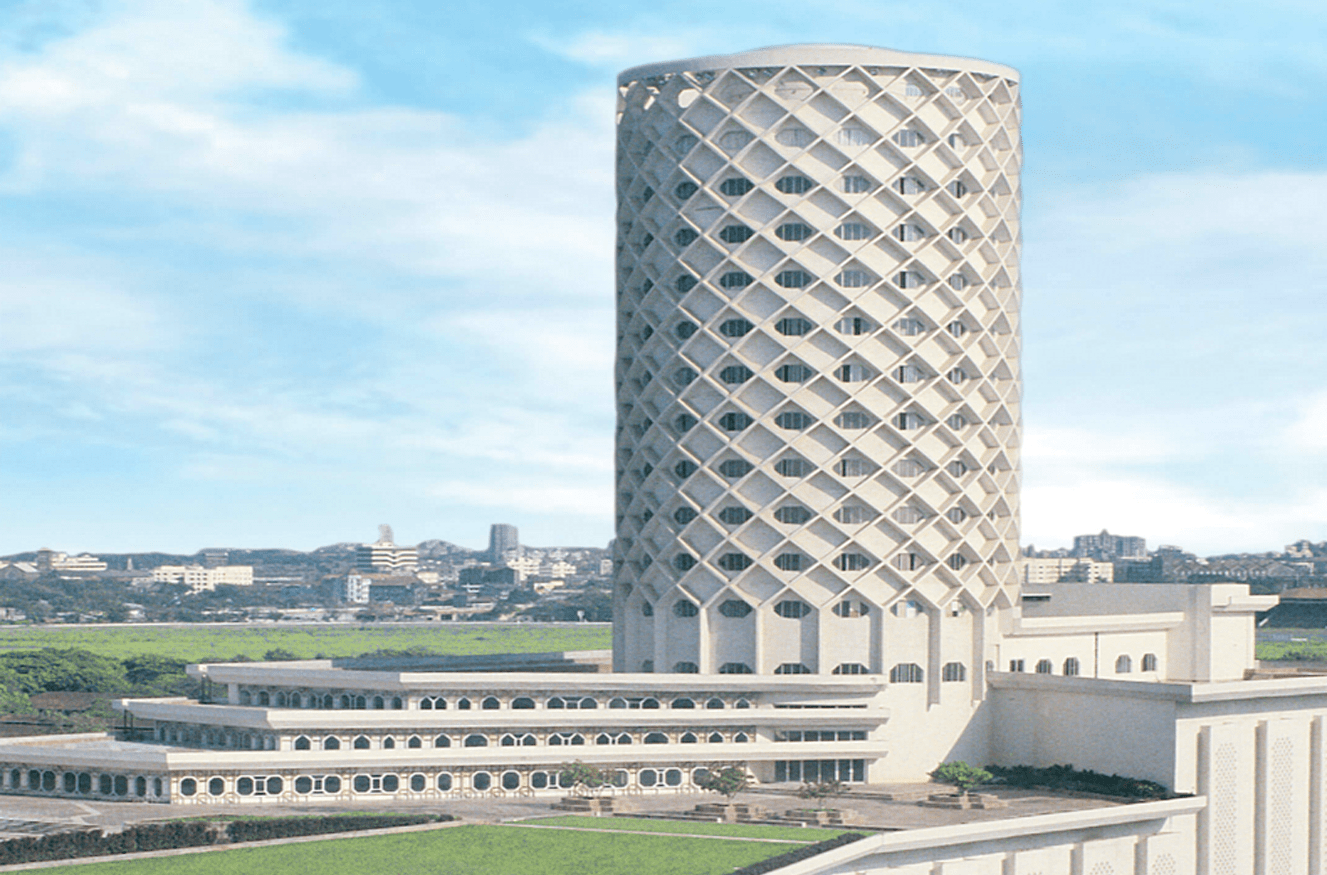
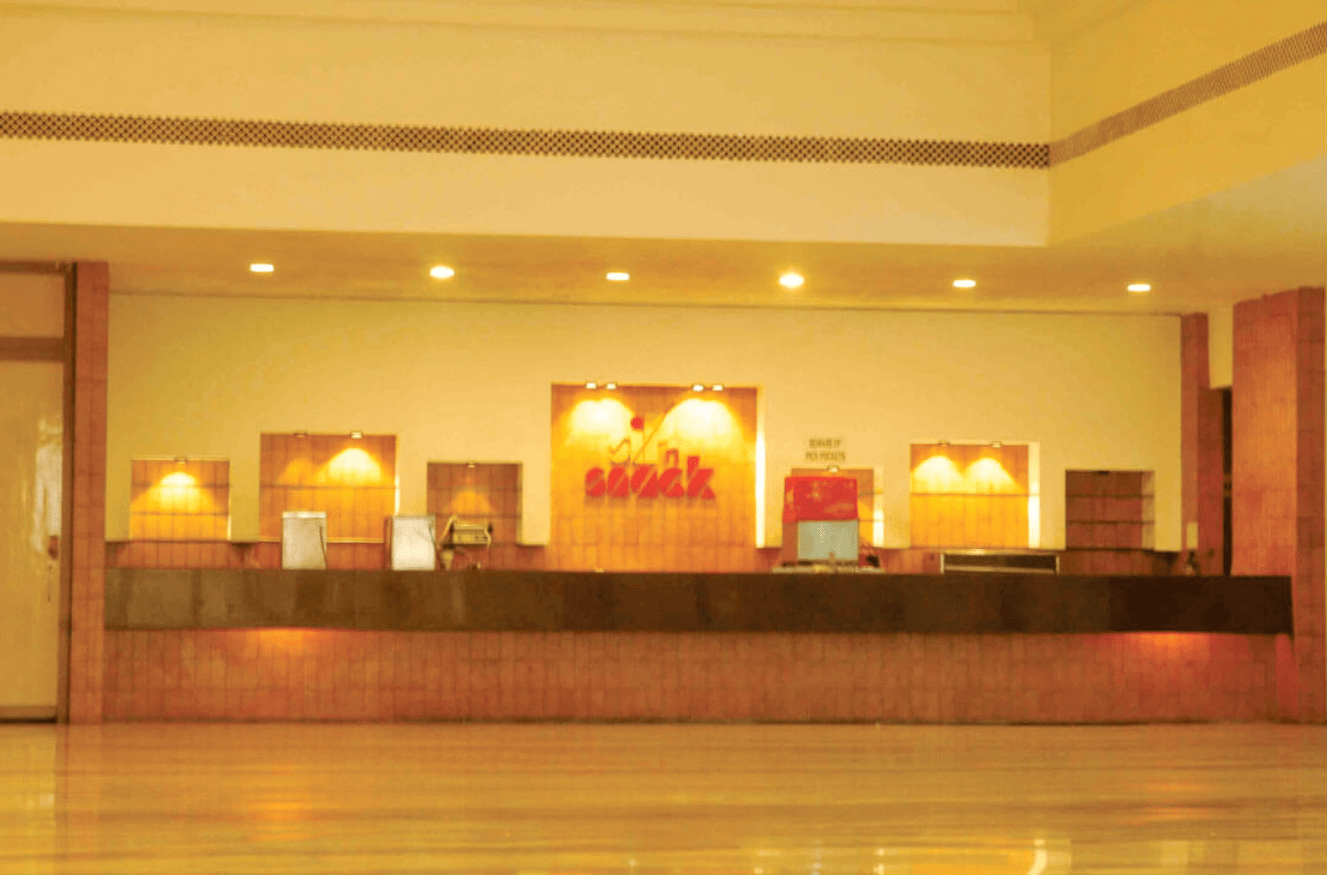
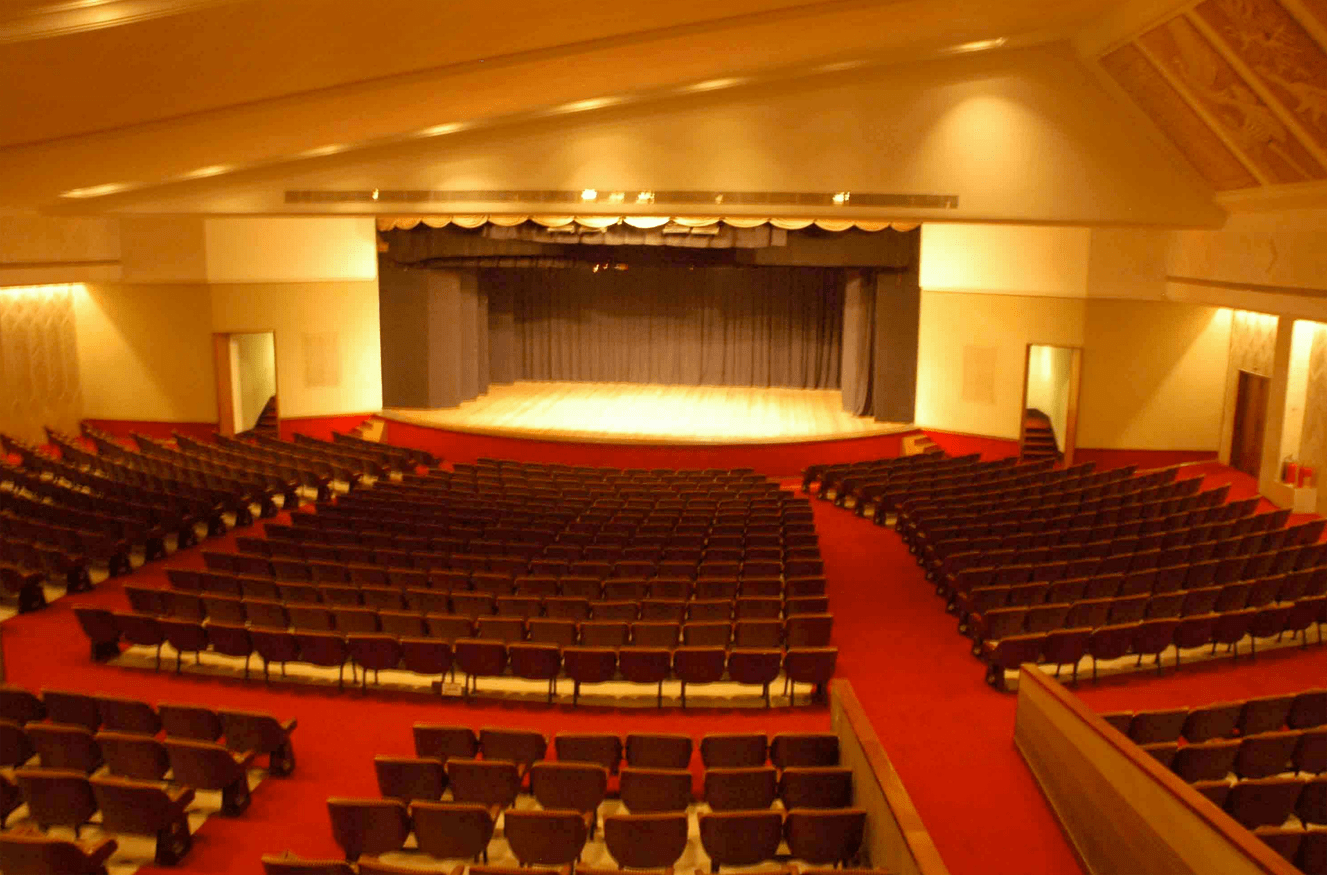

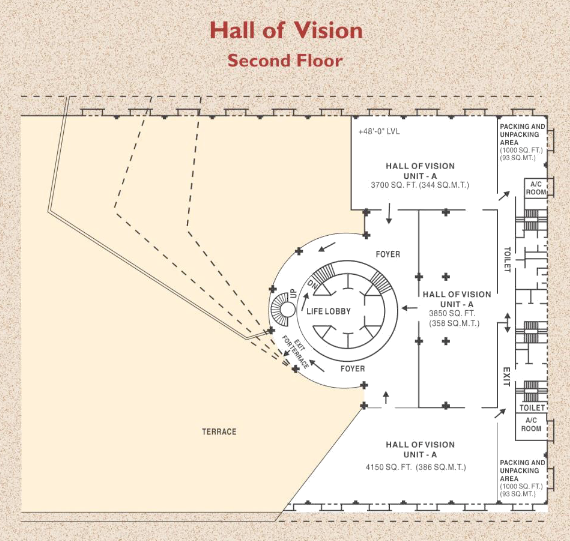
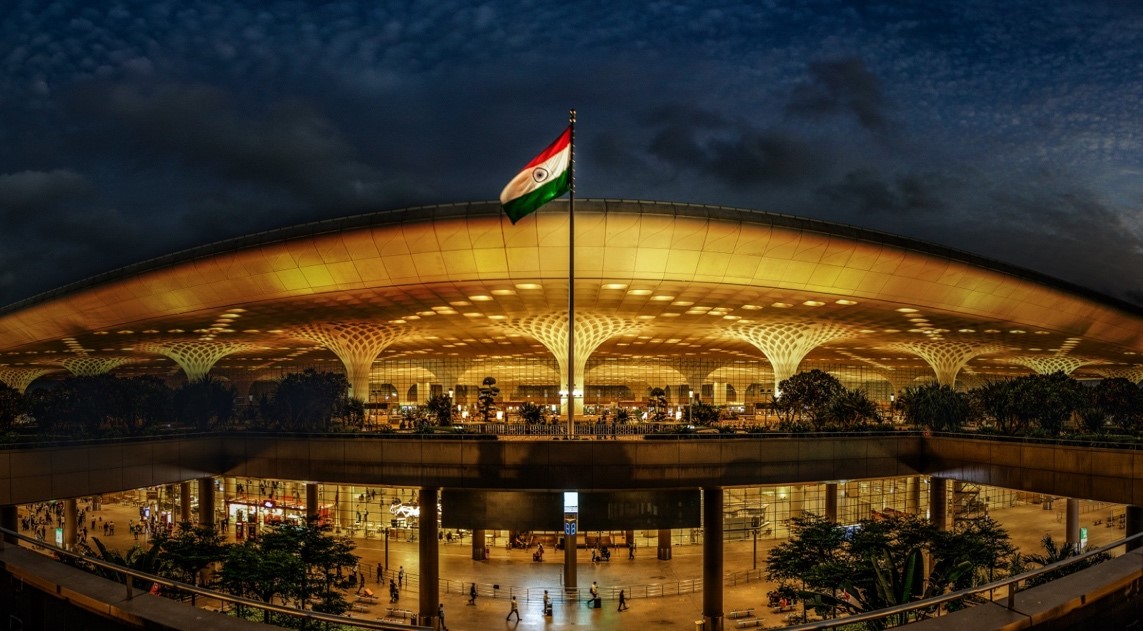
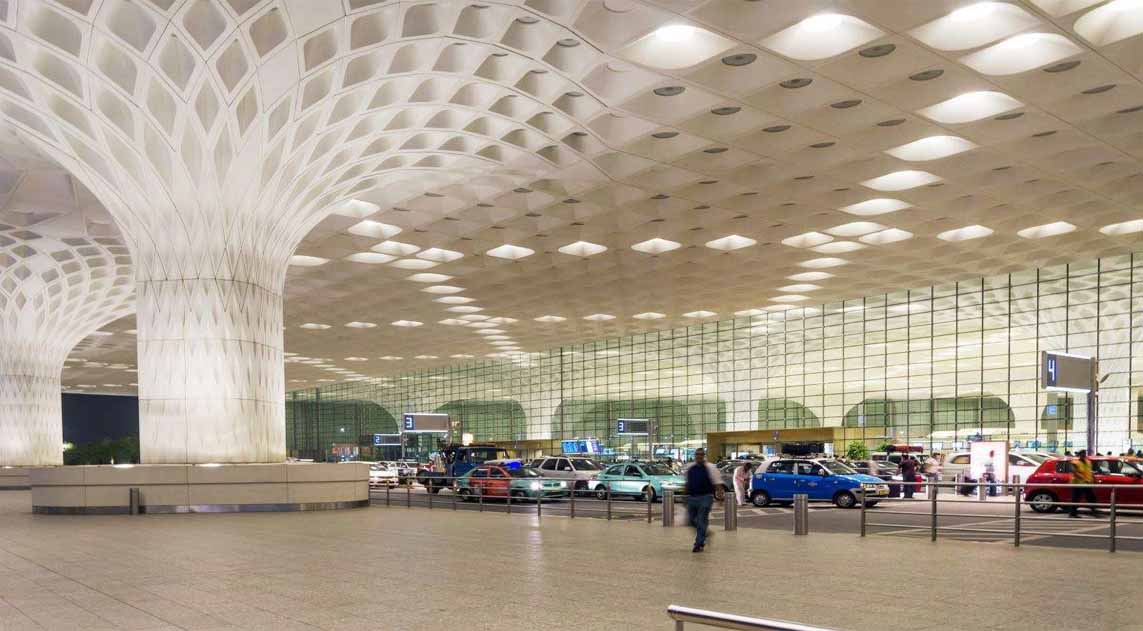
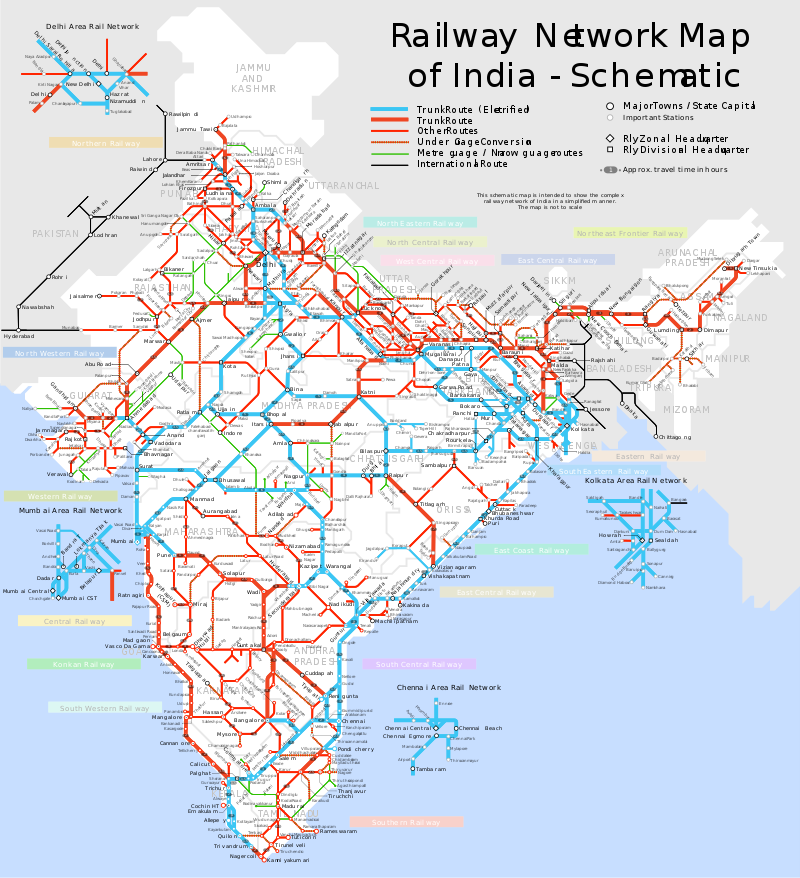
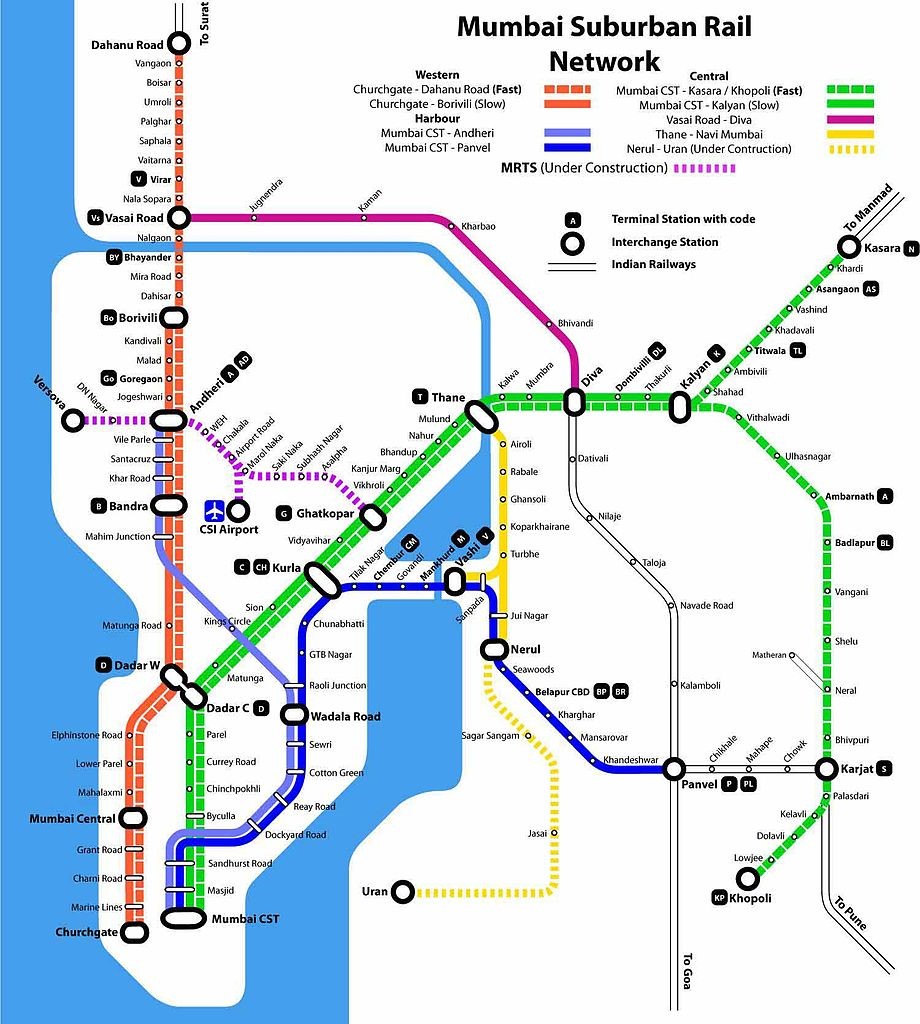
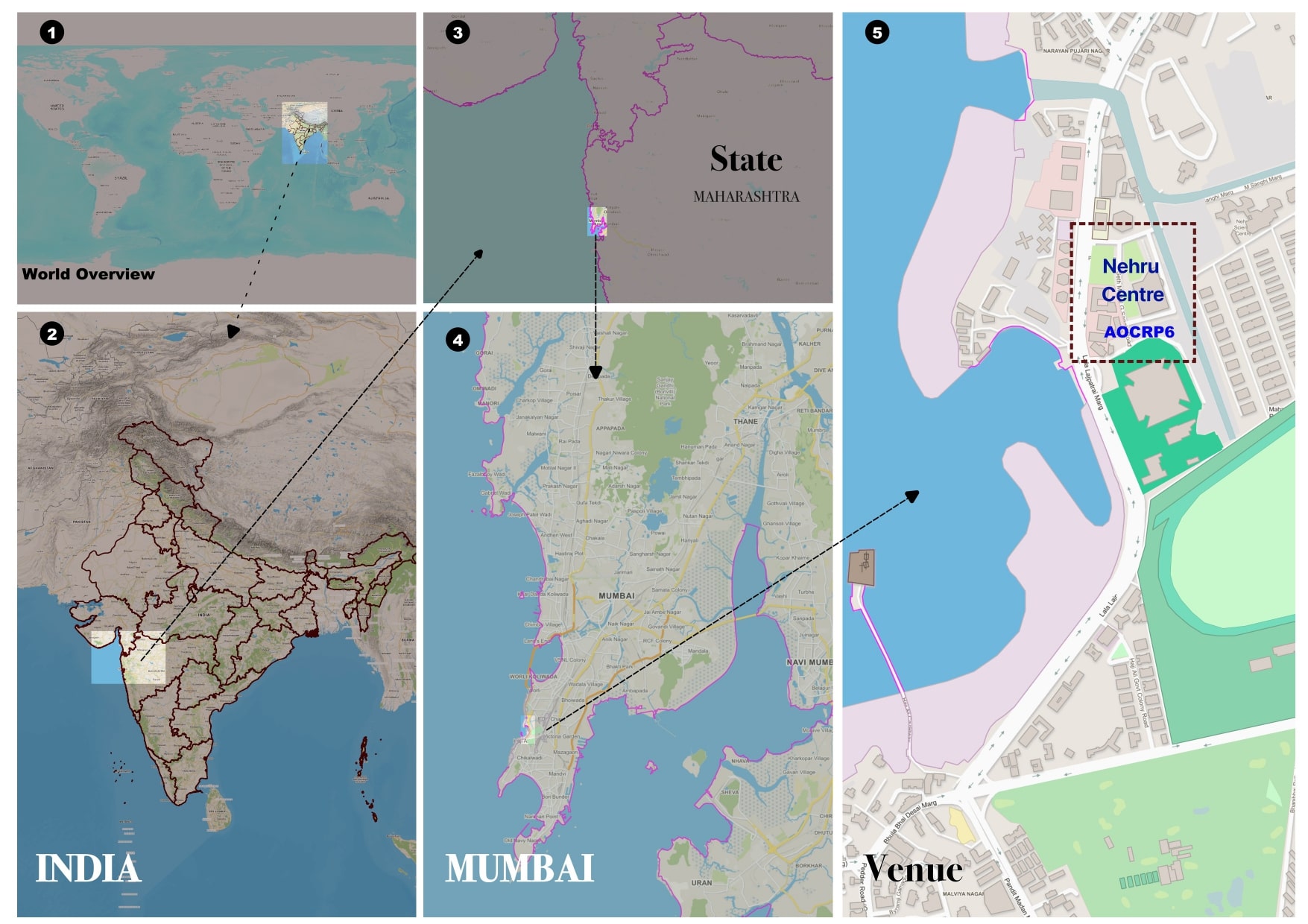
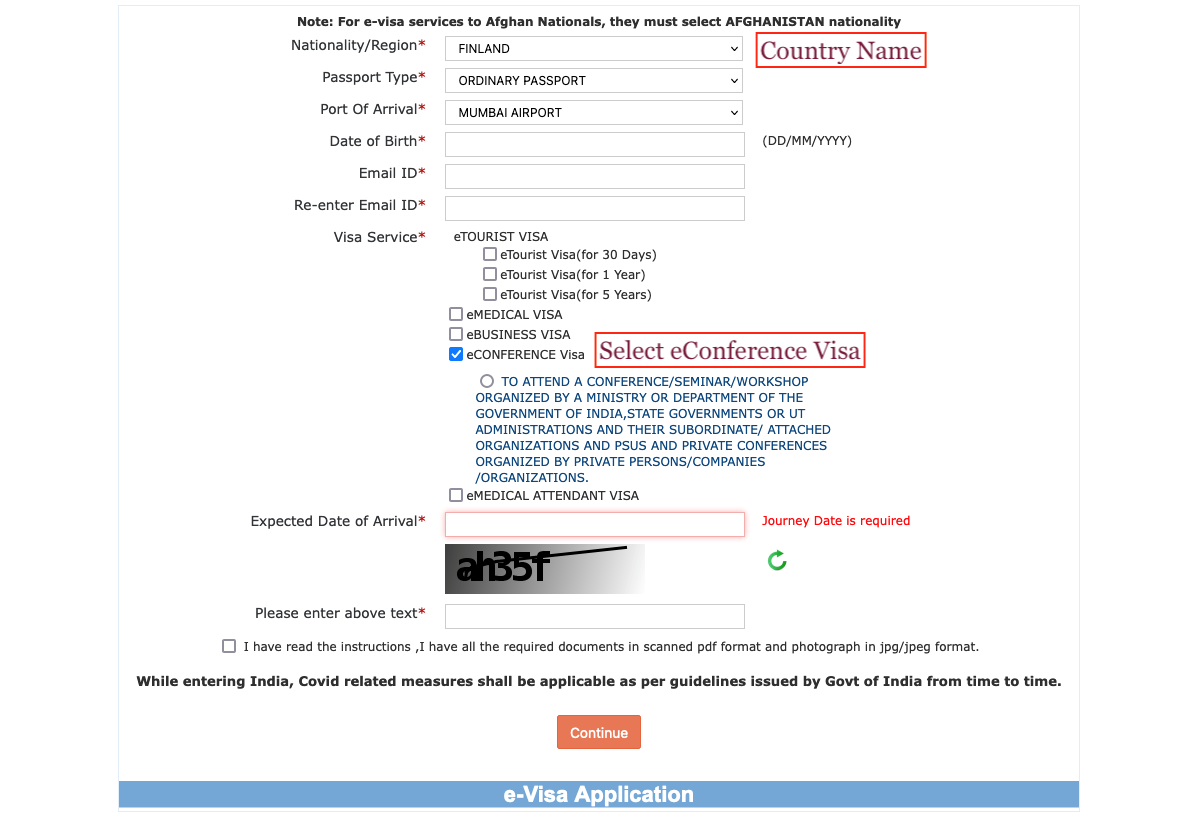
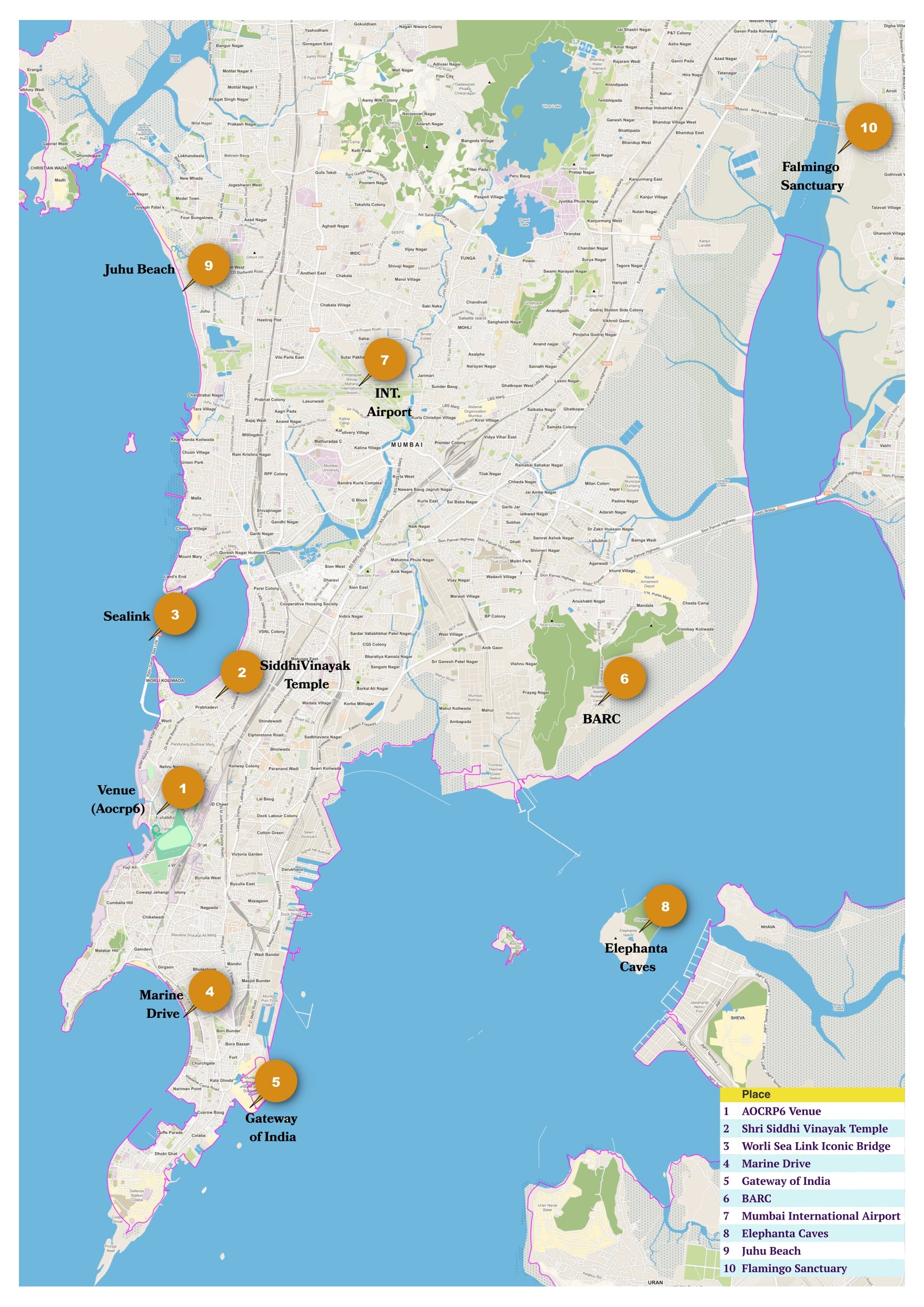
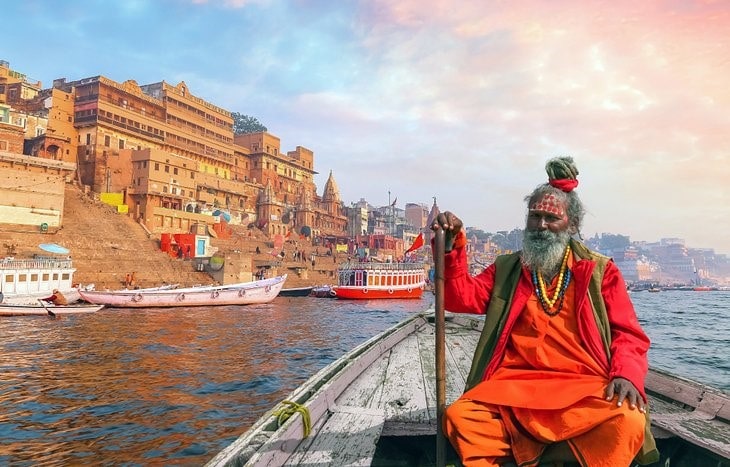
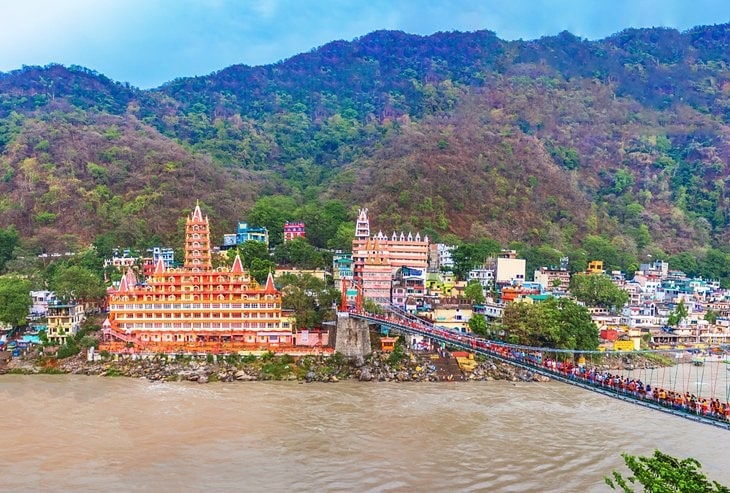

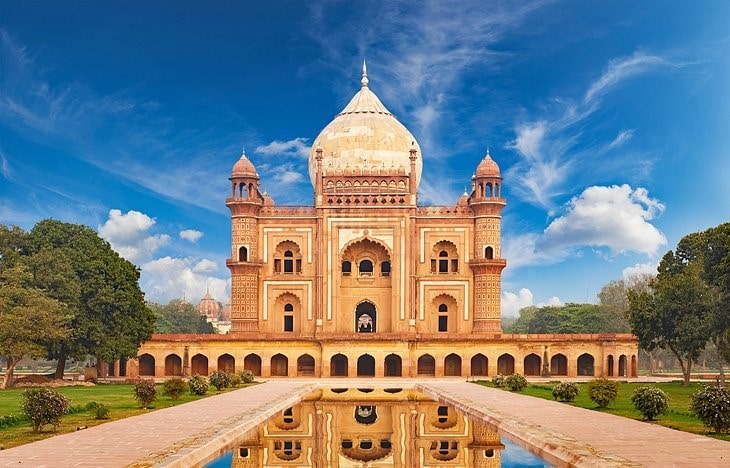
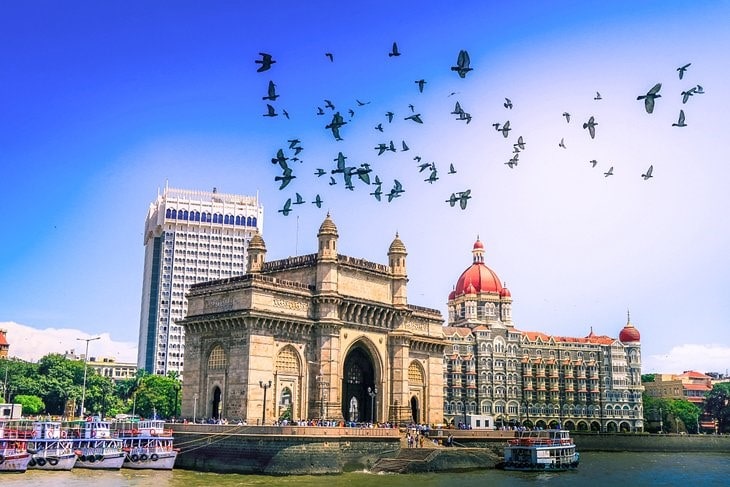
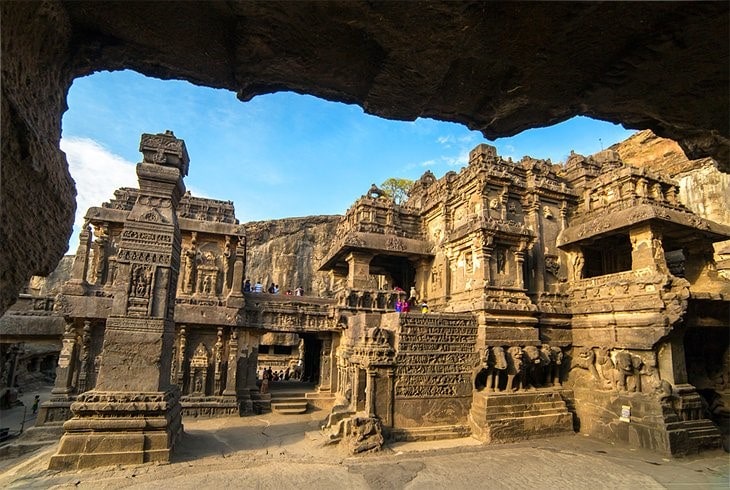
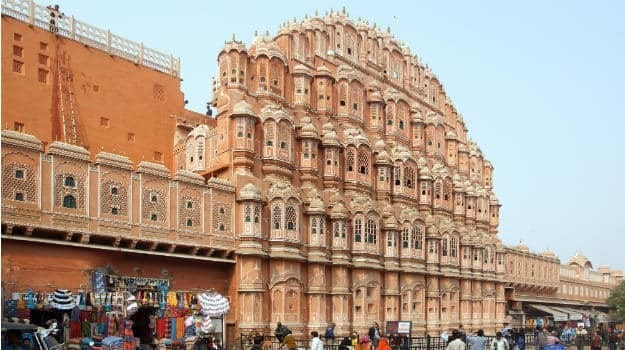
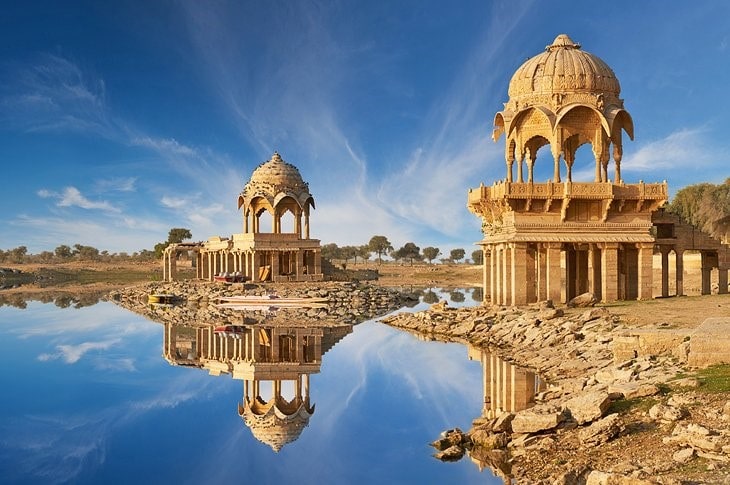




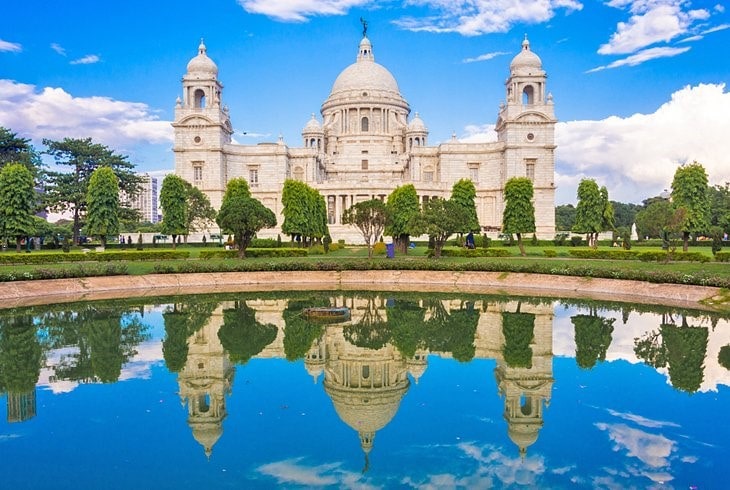
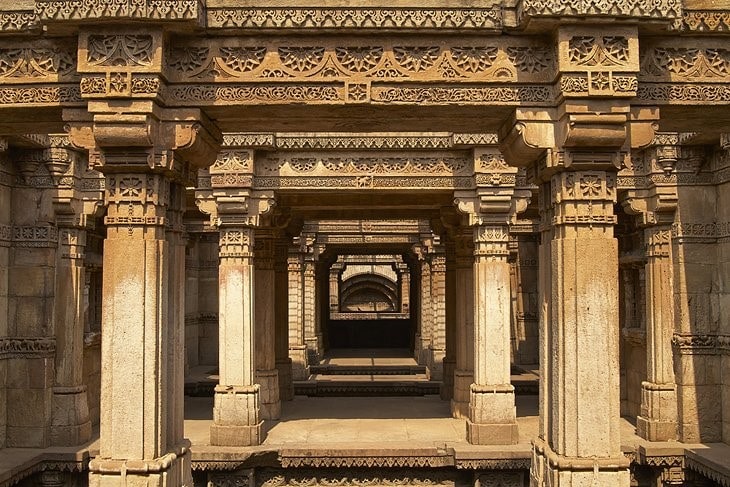


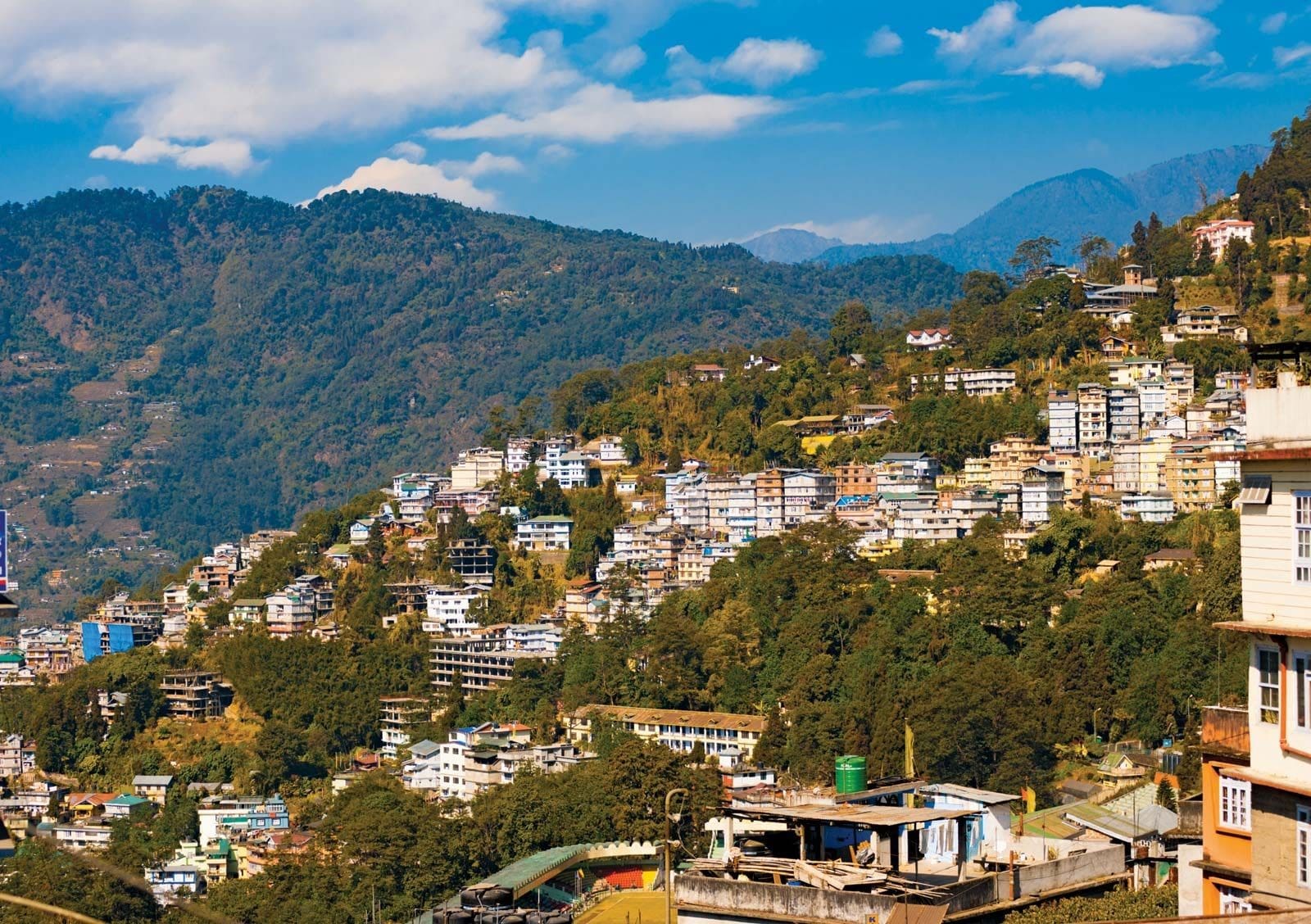


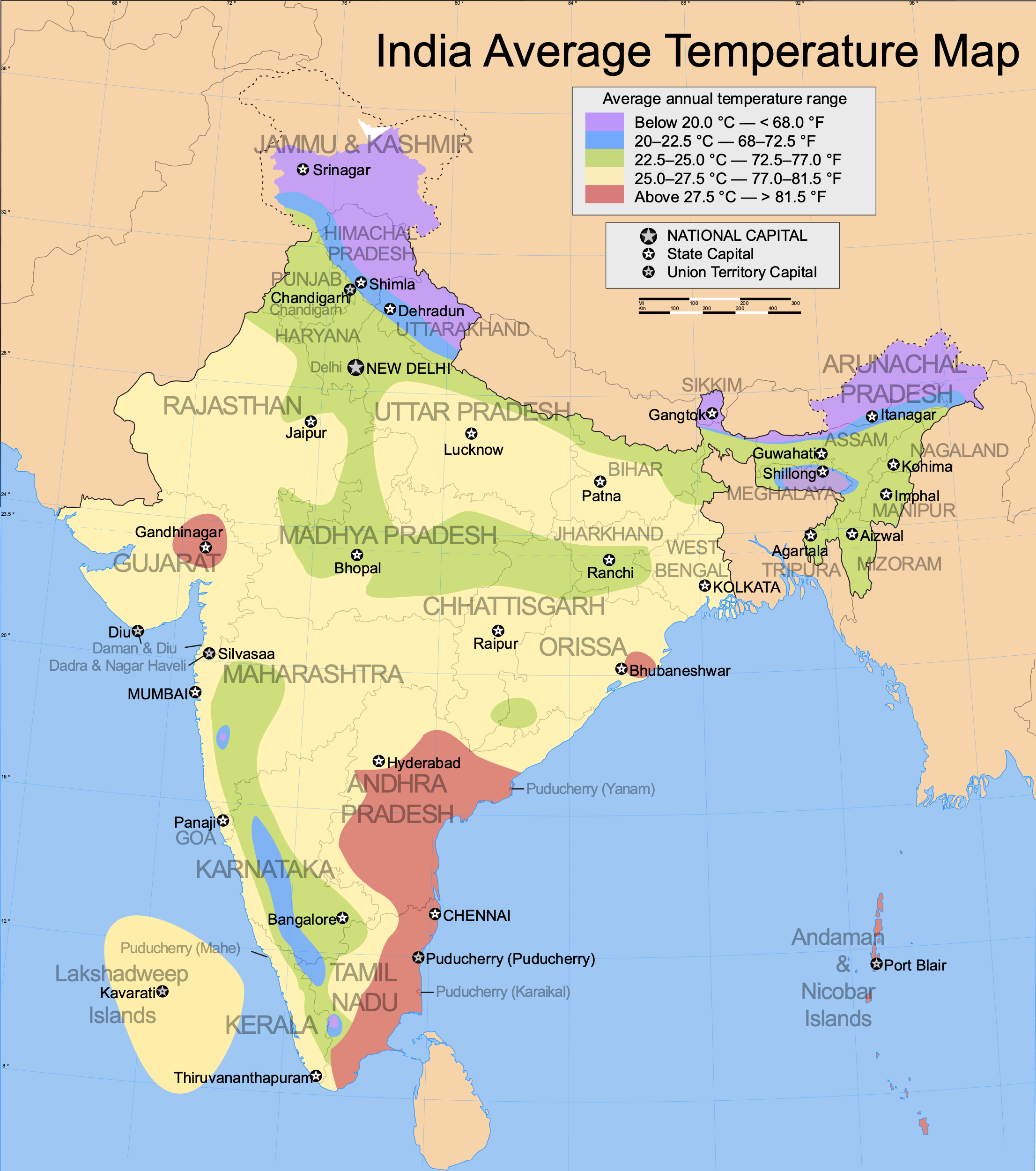

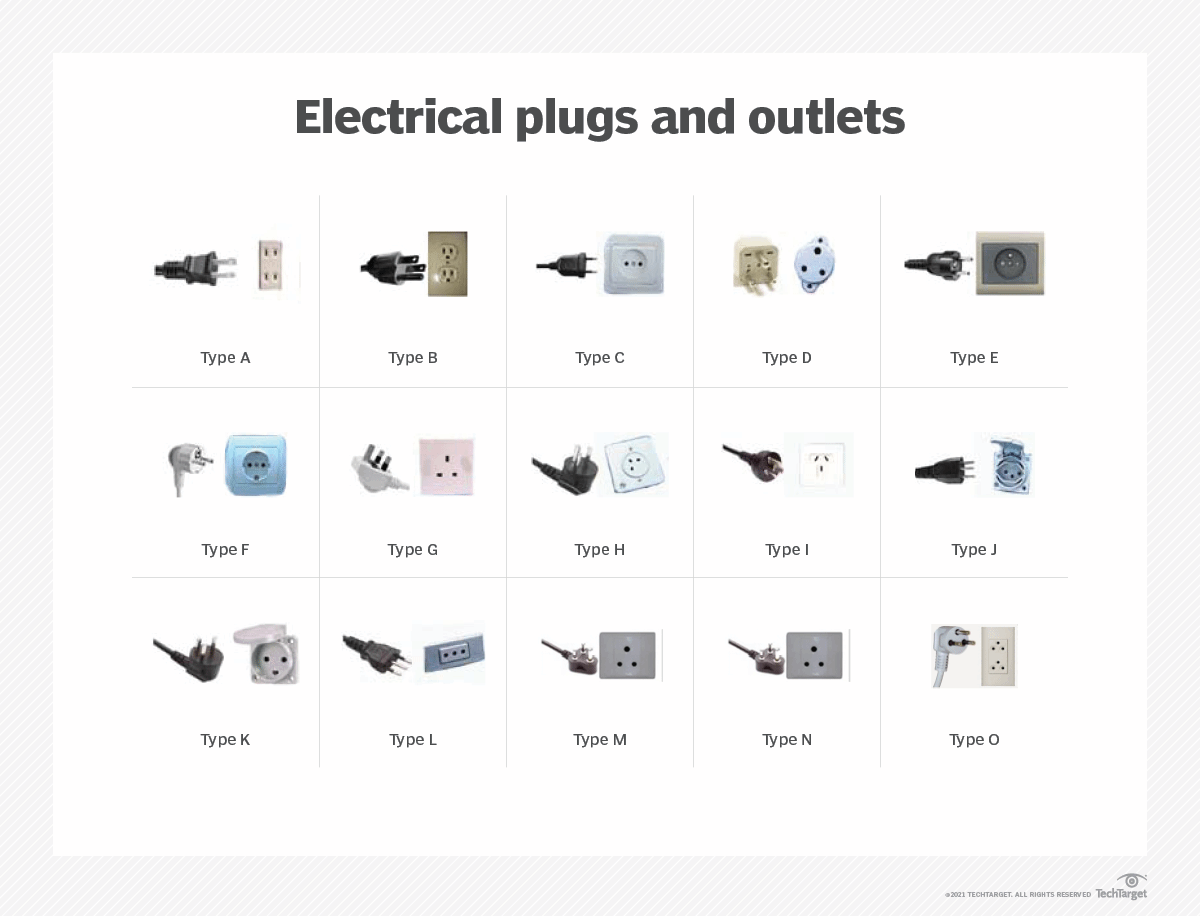
Social Programme